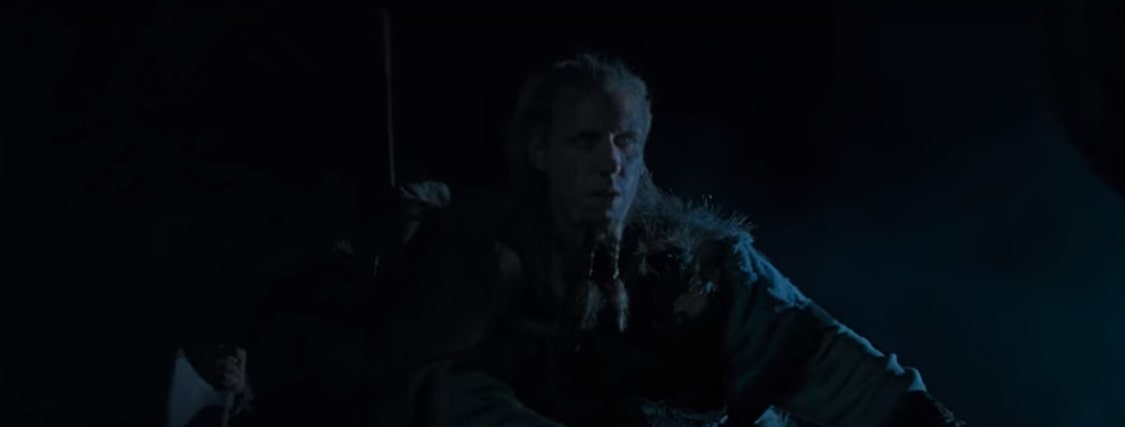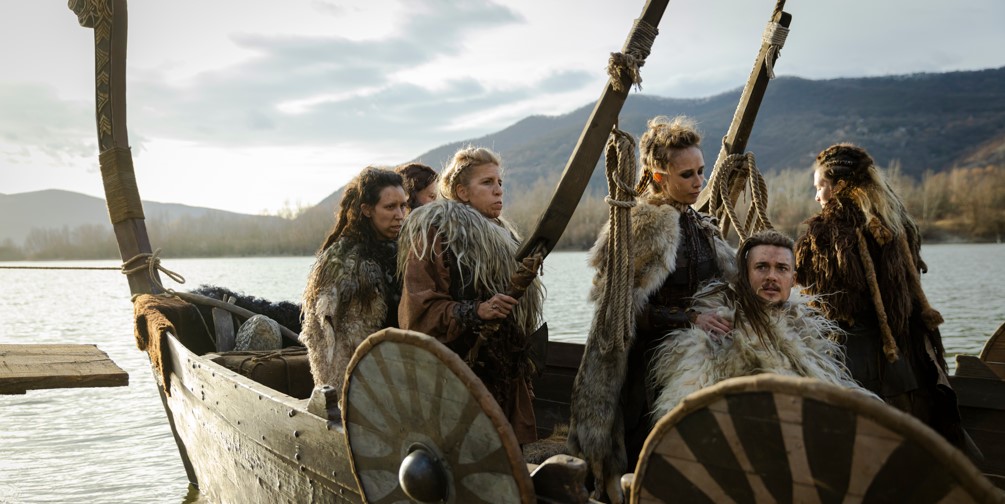Directed by Edward Bazalgette, ‘Seven Kings Must Die’ is a Netflix film that serves as the concluding chapter of ‘The Last Kingdom,’ the BBC Two/Netflix series that aired for five seasons from 2015 to 2022. Both the TV show and film are based on ‘The Saxon Stories,’ a series of historical fiction novels written by Bernard Cornwell. The plot revolves around Uhtred of Bebbanburg (Alexander Dreymon), the lord of the semi-independent region of Northumbria. After the death of the previous king, England enters an age of turmoil, prompting Uhtred to serve as its protector once again. The Wolf Warriors appear in the opening scene of the movie, perfectly setting up the war and violence that follow. Here is everything you need to know about them. SPOILERS AHEAD.
Wolf Warriors: Echoes of Norse Mythology
The opening scene of ‘Seven Kings Must Die’ begins with the narration from Finan (Mark Rowley), the fiercely loyal Irish warrior serving under Uhtred. He mentions that King Edward is dying, which has emboldened the enemies of England. With Northumbria being the only kingdom out of direct Saxon control, Anlaf (Pekka Strang), the Hiberno-Scandinavian (Irish-Viking) king of Irland, arrives in West Northumbria with a contingent of Wolf Warriors and proceeds to slaughter an entire settlement, so Uhtred and his people will not find out about them. Anlaf then reunites with his daughter Astrid, who had been in England for a while, gathering information for her father.
The Wolf Warriors of the film are inspired by their real-life counterparts. Wolves feature extensively in the Norse religion and the body of literature associated with it. They represent, on one side, destruction and chaos and wisdom, order, bravery, protection, and loyalty on the other. The gods placed the wolf Fenrir, son of the trickster god Loki and the giantess Angerboda, in magical chains, knowing that during Ragnarök, the anthropomorphic creature would break the said chains and devour the sun and kill Odin, the leader of the gods in the Norse pantheon.

In contrast, the wolves Geri and Freki are Odin’s constant companions. There are certain Old Norse texts where Freki and Fenrir are interchangeable. A religion and the society where it is prevalent often mirror aspects of each other. The people of medieval Scandinavia both feared and respected wolves. They were seen as creatures lurking outside society, representing the proverbial danger. An interesting thing to note here is that the Old Norse word for wolf, “vargr,” is also used for exiles. It stands to reason that in a society that highly valued family and unity, people who were forced to live outside it were considered as dangerous as wolves.
The Old Norse literature has plenty of examples of people changing into werewolves. The story of Sigmundr and Sinfjötli (‘The Saga of the Volsungs’) comes to mind. On the battlefield, the Viking warriors often growled and howled like wolves and even used their teeth. The particular group of Viking warriors who seemingly entered a trance-like fury during the battle were called berserkers. They inspired fear among their fellow Vikings because of their near-mythical battle prowess.
It is believed that in the Old Norse, the literal meaning of the word “berserkr” is “bear-shirt,” referring to the warriors who wore bear skin in battle. the Vatnsdæla saga, the Haraldskvæði, and the Grettis saga speak about the Ulfheðnar, warriors who wore wolf skin to battle, just like the band Anlaf leads at the start of ‘Seven Kings Must Die.’ The mere sight of them terrifies a local, who shouts out a warning and is immediately killed.
Some sources claim their wolf pelts were woven into their chainmail, while others describe them as not wearing mail coats. One of the four depictions in the famous Torslunda plates on the Swedish island Öland shows a man in a horned headdress dancing and a man in wolf skin carrying a spear. As the man in the horned headdress seems to be missing an eye, it is believed he is supposed to be Odin, accompanied by a Ulfheðnar.
Read More: Was King Aethelstan Gay in Real Life?


You must be logged in to post a comment.